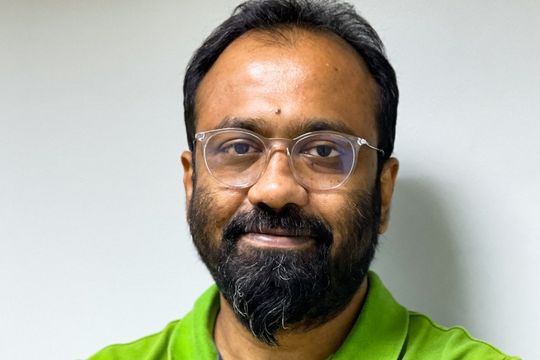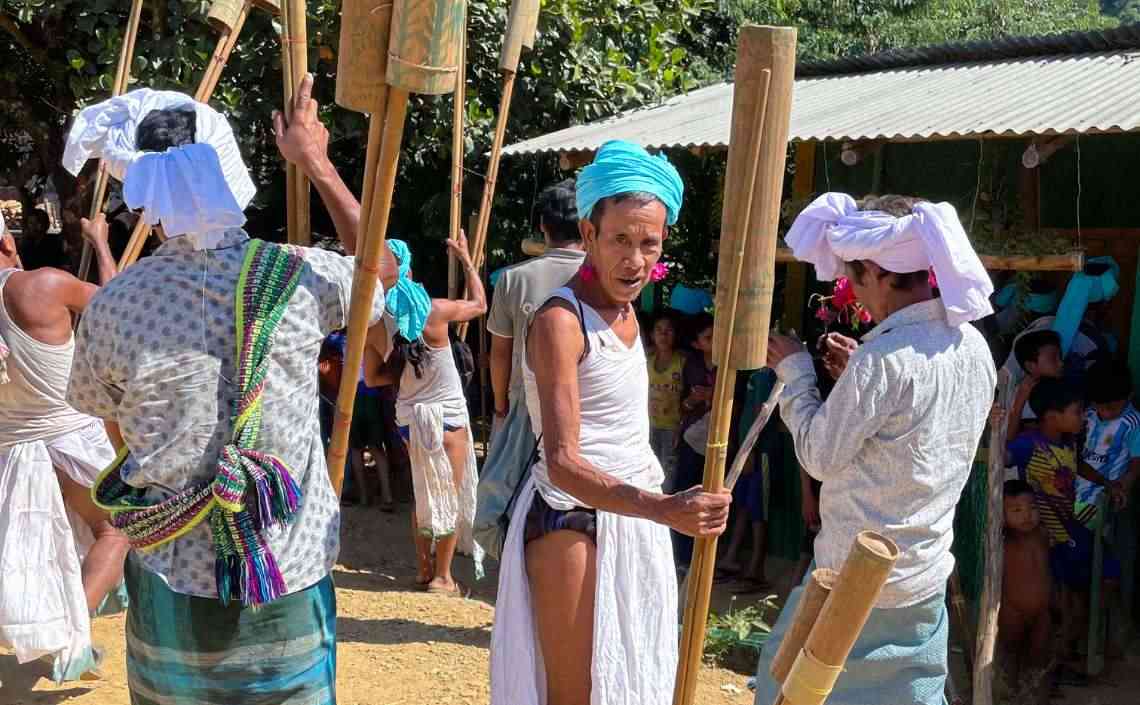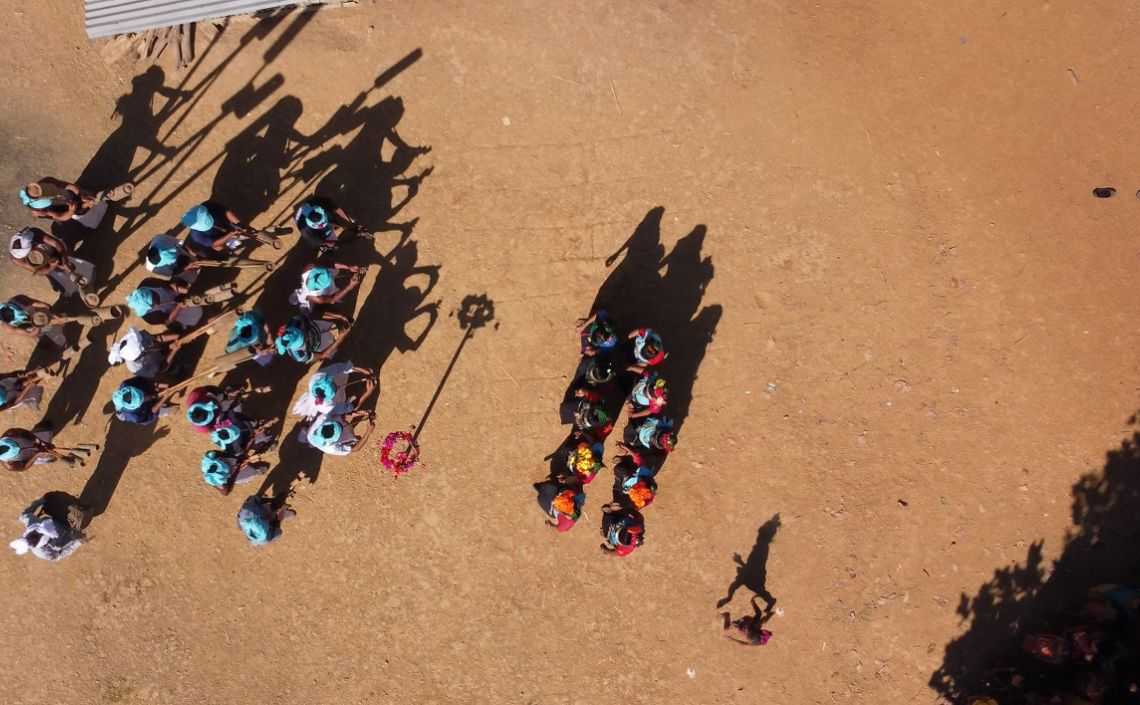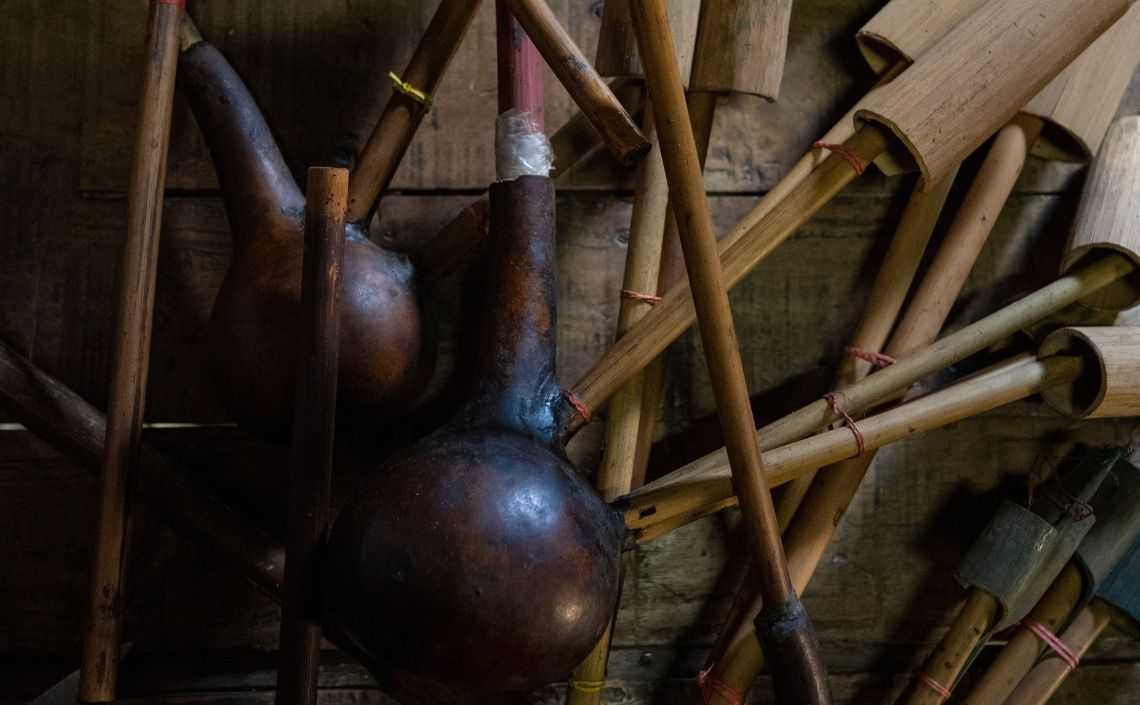The Mro is a small indigenous community living in the remote areas of south-east Bangladesh. They cherish and protect their traditions - their own rich language, culture. Art manager Asifuzzaman Khan set out to document their musical customs - a unique instrument called the Ploong (or Plung), in particular, a mouth organ made from gourds and bamboo. We caught up with the organizer of Dhaka International FolkFest to talk about Mro Song And Dance, a beautiful documentary - Khan's first film - capturing authentic music cultures on the backdrop of globalization.
- 23-27 OCT 2024
- Manchester, UK
Mro Song And Dance
Interview with Asifuzzaman Khan
13 December 2022 by Lucia Udvardyova
Mro Song And Dance is your first documentary, right?
Yes. When the opportunity arose, I tried to think differently about how to make it happen. I selected a cameraman and an editor who was mostly a still photographer and who had never done any video production before. I wanted to show the beauty of these indigenous peoples, their festivities, but also their struggles. The village leader spoke about how the youth nowadays are not so much interested in the traditions and he is worried that this tradition might get lost. On the other hand, the youth leader is hopeful. He said that young Mro people have now realized the importance of their own culture and are trying to value their cultural heritage. Throughout the film, my intention was to keep it as natural as possible. The costumes that are shown in the film are their own costumes, there is nothing artificial. When they are singing, they are sitting idle under a tree, and that’s how they would usually do it. I captured them as they are - honest and true to their beliefs. The village was very remote, situated one-two kilometers downhill from the road, which made it difficult logistically. They work really hard for their livelihood, and the music and the instruments are part of their lives. The Mro are not performers or musicians by profession, they are farmers. Music brings them joy during their everyday activities.
Why did you decide to portray this particular community?
I chose the Mro people because of their heritage and their unique instruments. No other indigenous community has these kinds of instruments or dance. Culturally they are very rich among the indigenous communities, in Bangladesh at least.
How long did it take to make the film?
I had three months to complete the project. And I have planned to do my field research in the month of September. When I originally planned to go there it was the rainy season so I couldn't make it, then I had planned to visit in October but it was the harvest season, when they were really busy and eventually no one would be able to dedicate their time to this. Finally, I did my visit in November, spent some time with the community in the village, and finished the film in December. We have used two mirrorless DSLR cameras for shooting the film. When we started video editing, we realized the DSLR cameras were of two different brands and they are giving two different tones (as a first-timer that was our learning lesson never to use two different brands). It was really a struggle for my video editor (as well as the main camera person) to balance among all cameras with required color correction. I was happy at the end since being a first-timer I managed to make this film.
There are also beautiful aerial shots in the film.
Yes, from the drone. We used two cameras and the third one from the drone.
The Mro people do not listen to any other music besides their own, and they also record their own music on their mobile phones and then listen to it.
When I was in the village, I saw them playing their songs and music from their basic mobile phones - not smartphones - and, more interestingly, they do record those from their live performance and listen to it to relax at their leisure time at home.
Is this also the case for the younger generation?
When I was there, I hadn't heard any other music besides their own, even with the young generation. Other indigenous communities are getting more interested in Bangla and other language songs, etc, but Mro are pretty special in this respect. They are into their own music, their own culture. In Bangladesh, we are surrounded by India, so there is a strong influence of Indian music and films and those don't attract them. The Mro are very keen to keep their culture strong.
There is a quote in the film about the musical instrument, the Ploong, being what defines the Mro people as a community.
Ploong is a unique instrument which is prepared and played by the Mro people only and eventually that's their heritage. Thus, when they listen to Ploong, they become very proud Mro people.
How does globalization influence these traditional communities?
There are not so many Ploong-makers left. It requires a particular skill to be able to make it. It’s made of bamboo and wax. Due to having to earn a living, people are gradually becoming interested in other activities rather than rural, cultural matters, and thus there are very few Ploong- makers left in the Mro community and they worry that it might disappear.
Have the Mro community seen the film?
Not yet. I will go there this winter. They don’t have electricity. I will take a screen and a projector to show it to them. The youth leader has seen the film and is also aware that the film was selected at WOMEX. He is very happy about the film, and that it has been shown globally.
In the credits at the end, it is mentioned that you curated the film.
The film was a result of a curator’s call as a pop-up project by the Goethe Institute in Bangladesh, who ended up partly financing the film. Creatively it was my brainchild. My initial idea for the project was different: I wanted to do a festival with indigenous communities at Bandarban, Bangladesh, with three major communities, including the Mro. Since the pop-up funding was not sufficient enough to organize this festival, they suggested I do a research project instead, but I actually wanted to make a documentary and ended up here.
Are you thinking about making any more films?
Yes, I’ll do a pop-up project for the WOW Festival organized by The British Council, Bangladesh. It's planned to be a collaboration project between a Marma singer (another indigenous community of Bangladesh who have melodious songs and music), a Baul singer (major folk genre of Bangladesh) and an Urdu singer (from Pakistan). It should be a live performance only but to add value to this production, I will shoot the whole thing as well.
You also are organizing a music festival in Bangladesh.
Dhaka International FolkFest - the biggest international folk festival in Bangladesh. We couldn’t make it this year because of the recession and the foreign currency crisis, but hopefully it will take place next year. We’ve been organizing it since 2015 and until 2019 - we have organized 5 successful editions so far.






